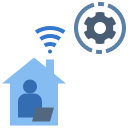Boosting Efficiency in Remote Work Environments
Remote work has rapidly evolved from a temporary solution into a vital strategy for many organizations around the globe. As teams become increasingly distributed, the need for effective systems, tools, and practices has never been greater. Understanding how to foster efficiency in these environments ensures that businesses remain productive, employees feel supported, and objectives are met without compromise. This guide explores the key strategies and considerations to help any organization enhance productivity and drive results while working remotely.
Establishing Clear Communication Channels
Setting Expectations for Communication
Defining how, when, and where to communicate reduces misunderstandings and interruptions in remote teams. By establishing clear expectations—such as response timeframes, preferred channels for urgent versus non-urgent matters, and standardized weekly updates—employees have a solid structure to guide their workflow. This clarity helps workers focus on tasks without worrying about missing important messages or over-communicating, while promoting a respectful digital culture that values both collaboration and individual focus time.


Choosing the Right Communication Tools
Selecting communication tools that align with team needs is paramount. By assessing the group’s workflow, technical comfort level, and the nature of interactions required, organizations can implement solutions like instant messaging for quick updates, video conferencing for complex discussions, and collaborative document platforms for sharing real-time progress. The right combination keeps information accessible and minimizes time wasted switching between platforms, thereby enhancing overall efficiency in the remote environment.
Leveraging Technology for Collaboration
Implementing Collaborative Platforms
Modern collaboration platforms allow team members to work together on documents, projects, and presentations in real time. By integrating these platforms into daily workflows, organizations dramatically reduce bottlenecks and duplicate work. This not only keeps everyone on the same page but also offers transparency into project progress and individual contributions, streamlining decision-making and heightening collective efficiency.
Integrating Project Management Solutions
A robust project management system offers a centralized view of tasks, deadlines, and workloads. By visualizing what needs to be done and who is responsible, these solutions prevent work from slipping through the cracks. They also enable managers to quickly identify potential roadblocks or bandwidth issues, ensuring that resources are allocated effectively and that progress toward organizational objectives remains steady.
Encouraging Real-Time Collaboration
Encouraging teams to collaborate in real time—using video calls, chat functions, or shared digital whiteboards—replicates some benefits of in-person office interactions. Real-time collaboration enables swift problem-solving, fosters creative brainstorming, and reduces the need for lengthy email exchanges. When seamlessly integrated into daily operations, such practices can transform remote work from a solitary endeavor into an energizing collective effort.

Emphasizing Key Performance Metrics
Clearly defined metrics and performance indicators guide remote teams’ efforts and sharpen their focus on what truly matters. By measuring progress against specific, achievable goals, employees stay aligned and motivated, confident in their contribution toward larger organizational objectives. Regular check-ins based on these metrics drive constructive feedback and continuous improvement, furthering both individual and team efficiency.

Empowering Autonomy and Accountability
Remote employees excel when they feel trusted to manage their own schedules and workloads. Granting autonomy not only increases job satisfaction but also encourages individuals to set their own priorities and work at their personal peak productivity. Coupled with transparent accountability measures, this trust produces a performance-driven culture where efficiency flourishes and micromanagement becomes unnecessary.
Supporting Work-Life Balance
Encouraging Flexible Schedules
Allowing employees flexibility in structuring their workdays enables them to accommodate personal obligations and energy levels. Whether it’s tending to family during the day or capitalizing on productive periods in the evening, flexible arrangements reduce stress and foster greater engagement. This autonomy not only respects individual circumstances but also results in measurable gains in focus and output for the organization.
Promoting Healthy Boundaries
Providing clear guidance around expected work hours, response times, and taking breaks helps remote team members avoid burnout. Organizations that actively encourage downtime, discourage after-hours messaging, and model healthy boundaries send a powerful message of respect for personal life. Such practices help employees recharge, sustain productivity, and remain committed to the team’s goals without sacrificing their well-being.
Offering Wellness Resources and Support
Access to wellness programs, counseling, and mental health resources shows employees that their holistic health is a top organizational priority. Whether it’s virtual fitness classes, meditation sessions, or confidential support lines, these resources help workers manage stress and feel valued. When employees are mentally and physically well, they are better equipped to deliver consistent, high-quality results in their remote roles.
Enhancing Time Management Skills
Encouraging the use of time-blocking—allocating specific time slots for different tasks—enables workers to concentrate deeply and prioritize high-impact activities. By dividing the day into focused intervals and scheduled breaks, distractions are minimized and workflow becomes more predictable. Over time, this structured approach empowers employees to maximize their output while maintaining a healthy pace.
Offering training on proven prioritization frameworks, such as the Eisenhower Matrix or the Pomodoro Technique, equips remote workers to identify and attack their most important tasks first. Learning when to delegate, defer, or discard tasks helps them avoid overwhelm and stay focused on outcomes that drive real value. Regular reinforcement of these methods solidifies good habits and keeps teams operating at their full potential.
Implementing respectful and transparent time-tracking enables both employees and managers to understand where effort is going and identify areas for improvement. When used as a developmental tool rather than a punitive measure, time-tracking supports self-awareness and more strategic planning. It also ensures that workloads are balanced and that success is measured by results, not just hours logged.

Facilitating Regular Virtual Social Interactions
Scheduling informal virtual gatherings—such as coffee breaks, happy hours, or interest-based clubs—encourages colleagues to connect beyond work topics. These moments build personal rapport and camaraderie, reducing feelings of isolation common in remote settings. Over time, these bonds translate into smoother communication, greater mutual support, and a stronger, more inclusive culture.
Fostering Inclusivity and Belonging
Deliberately cultivating an environment where every voice is heard is critical in diverse and dispersed teams. Encouraging feedback, celebrating different backgrounds, and implementing fair policies ensures that all employees feel supported and valued. Such an inclusive atmosphere enables everyone to contribute fully, boosting collective efficiency and innovation.
Supporting Mentorship and Development
Pairing remote employees with mentors or offering opportunities for skill development helps team members grow and thrive. These relationships provide guidance, encouragement, and pathways for career advancement, making people feel invested in the organization’s success. As confidence and capability rise, so do productivity and commitment to shared goals.
Streamlining Processes and Workflows
Clear, centralized documentation empowers all team members to access information swiftly and reduces time spent searching for answers. Developing guidelines for how documents are created, named, and stored promotes consistency and eliminates confusion. Standardization also simplifies onboarding and supports knowledge sharing, making team efforts more agile and efficient.
Identifying repetitive tasks that can be automated frees up valuable time for employees to concentrate on more strategic and creative work. Automation tools—from scheduling assistants to invoicing systems—handle routine operations efficiently and with minimal oversight. This not only increases productivity but also reduces errors and enables workers to spend their energy on tasks that drive greater value.
Clear and efficient processes for requesting approvals or offering feedback ensure that work advances smoothly and decisions are made promptly. By minimizing bureaucracy and empowering team members with decision-making authority where appropriate, organizations can maintain momentum and avoid bottlenecks. These refined loops help instill confidence and responsibility, fostering a culture of continuous improvement and swift execution.
